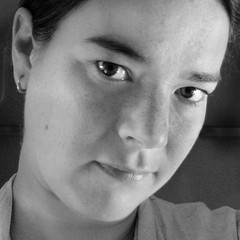We did a number of things so as to try not to disrupt the illusion produced in the mirror that I was touching the left side of David’s face.
Once I got used to what I was doing, I would stand behind the chair that David was sitting in and reach my hand around on the right side. That way, David would not see me on his right side in his peripheral vision as he looked into the mirror.
I made every effort not to touch the left side of David’s face while he was in front of the mirrors. I was concerned that if he experienced numbness in his right side while I was touching the left it would reduce the effectiveness.
I also found it useful to put my left hand on his head to steady it as I massaged the front of the face. I made an effort to put it right in the middle of the back of the head so it would not seem like it was on either side in particular.
In addition, if David had an itch or had to move for any other reason, he would close his eyes so that he would not see his own movement in the mirror. Otherwise, he held fairly still, though if you know David, you will understand that I had to remind him often that he was not supposed to be talking.
At one point the overhead light in the room where we did this went out and we started using a desk lamp which produced more focused light. I was concerned that this might confuse the brain and so tried to put the light more or less in front of David so as to not produce significant shadows on either side. Still, even when this was impossible, it did not seem to make a difference, which is consistent with what I learned in graduate school about how we perceive light and shadow: we do not have a strong expectation that it will be consistent within any single scene. So I am guessing that is really pretty much of a non-factor.

No comments:
Post a Comment